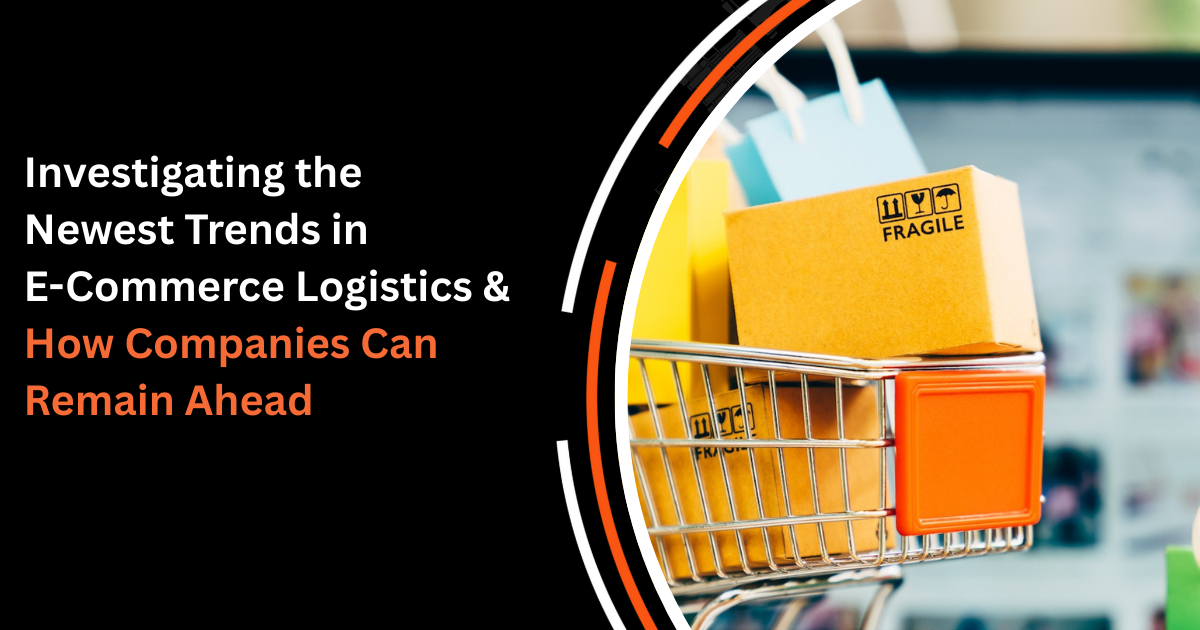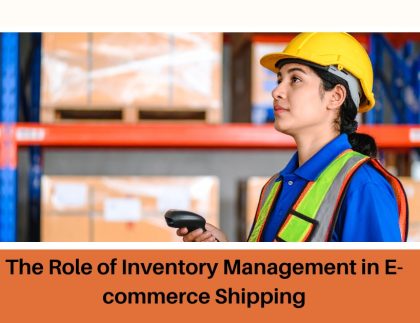
E-commerce has revolutionized the way we shop, and convenience and speed have become the new norm. As shopping online is set to double exponentially, the behind-the-scenes logistics of it all—warehousing, inventory tracking, delivery, and returns—have become a make-or-break aspect of a company’s success. Being a leader in e-commerce isn’t about having the best product; it’s about getting it to customers efficiently, quickly, and with certainty.
In this blog, we discuss the upcoming trends in e-commerce logistics and how businesses can remain competitive.
- Warehousing and Fulfillment Automation
Automation is revolutionizing the world of logistics. From robotic picking solutions to automated sorting equipment, companies can ship orders in less time while minimizing the risk of human error. Automated warehouses enable real-time tracking of inventory, faster order shipment, and fewer operational costs.
How businesses can remain ahead:
Investing in automation equipment for warehouses, such as robotic equipment or AI-based inventory management, can satisfy increased demand without a tenfold rise in labor costs.
- Same-Day and Hyperlocal Delivery
Today’s consumers expect quicker delivery, even in hours. Hyperlocal delivery models, enabled by local stores or dark stores, are becoming increasingly popular, especially in cities.
How companies can stay ahead:
Collaborating with local delivery networks or implementing in-house hyperlocal delivery systems can satisfy customers and enhance satisfaction.
- Green Logistics Practices
Sustainability is now an organizational goal for consumers as well as regulators. E-commerce firms are pushing the boundaries of using environmentally friendly packaging, electric vans, and optimized routes to minimize carbon emissions.
How companies can remain at the forefront:
Implement green logistics practices not only for regulatory compliance, but as a differentiator. Environmentally aware consumers are more likely to use brands that share their values.
- Data-Driven Supply Chain Management
Data is the core of contemporary logistics. Through predictive analytics, AI, and machine learning, businesses can predict demand, optimize stock, and reduce shipping time.
How companies can remain ahead:
Use sophisticated analytics tools to forecast buying behavior and optimize supply chain decisions. This minimizes stockouts, overstocks, and delivery delays.
- Omnichannel Fulfillment
Consumers increasingly demand frictionless experiences across multiple channels—online stores, mobile apps, social commerce, and physical stores. Harmonizing these channels in logistics provides quicker and more adaptive delivery choices.
How companies can remain competitive:
Invest in an integrated order management system (OMS) that pools inventory across all channels and provides elastic delivery choices like store pickup, locker delivery, or doorstep drop.
- Improved Returns Management
Returns are a substantial e-commerce challenge, both for costs and customer satisfaction. Effective reverse logistics—merging returns from customers into warehouses—is increasingly becoming a differentiator.
How companies can remain ahead:
Provide transparent return policies, leverage automated return tracking, and collaborate with third-party logistics companies that have expertise in reverse logistics to optimize efficiency.
- AI and IoT Integration
Artificial Intelligence (AI) and Internet of Things (IoT) technologies are making logistics smarter—everything from real-time shipment tracking to smart routing of delivery fleets. IoT sensors give visibility into inventory status and environmental conditions to ensure that products arrive at customers in pristine condition.
How companies can keep ahead:
Make investments in AI and IoT technology for predictive maintenance, shipment monitoring, and automated decision-making logistics processes.
Conclusion
The e-commerce logistics industry is changing fast due to technology, customers’ expectations, and the desire to be sustainable. Companies that adopt automation, data-driven approaches, green initiatives, and omnichannel fulfillment will be more likely to remain ahead of the competitive game.
Adjusting to these trends is not a choice—it’s a matter of survival. Through proactive thinking and harnessing creative logistics solutions, e-commerce companies can not only fulfill customer requirements but also establish a competitive edge.


